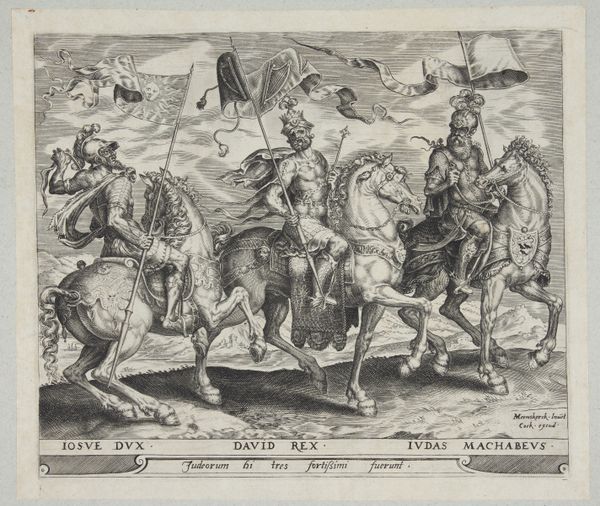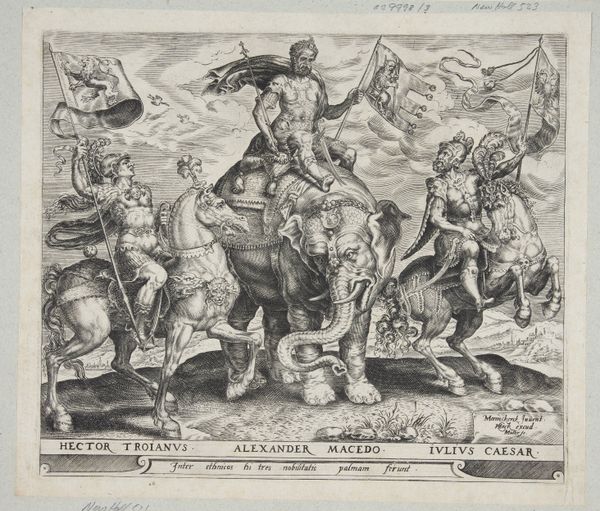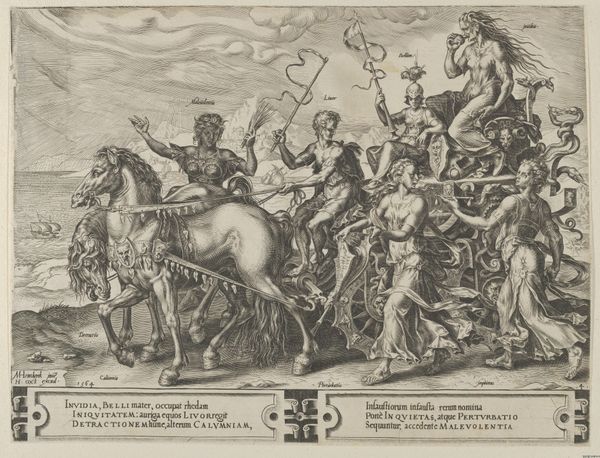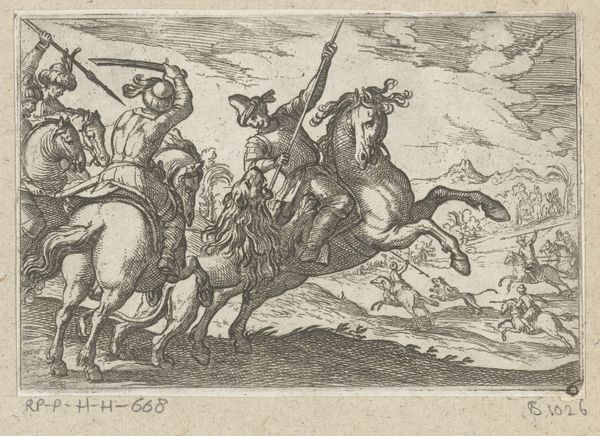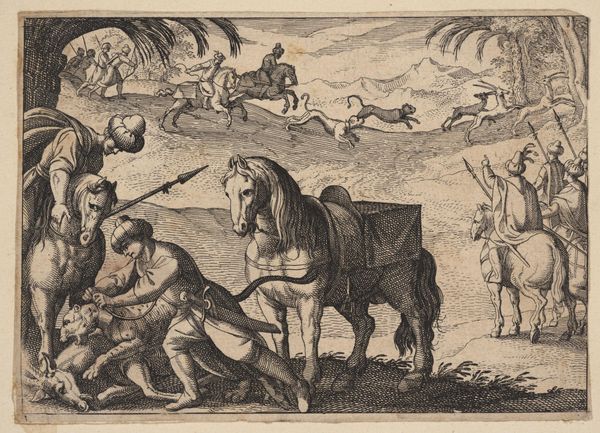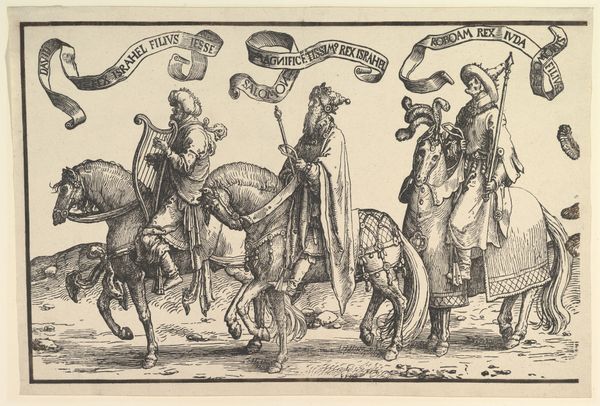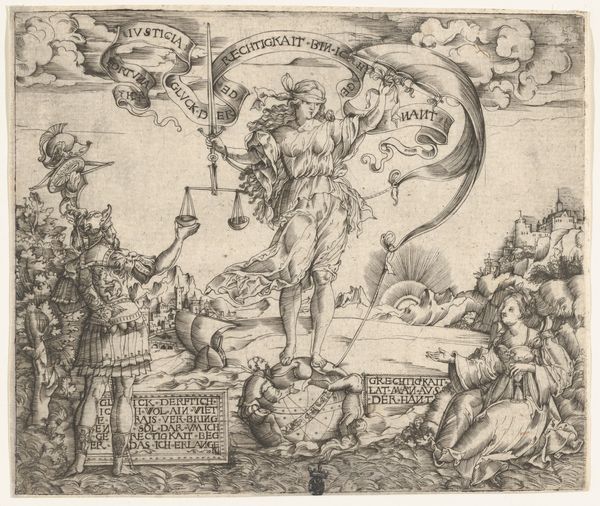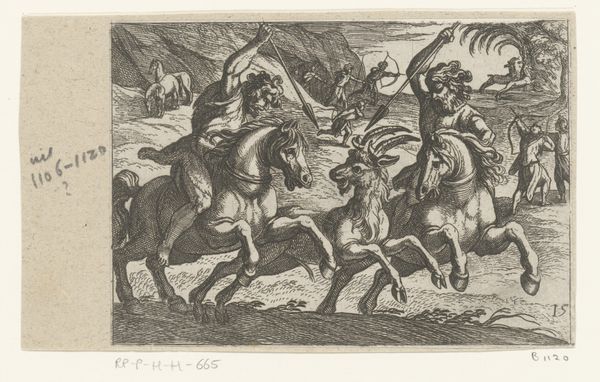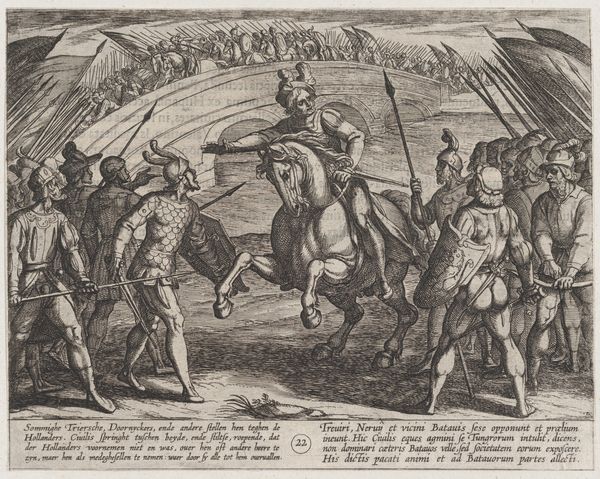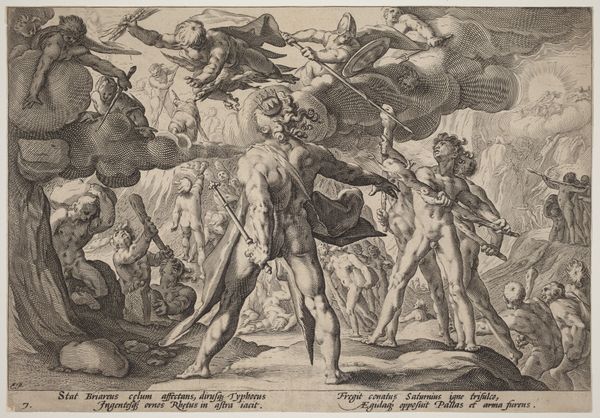
print, engraving
# print
#
mannerism
#
figuration
#
group-portraits
#
history-painting
#
engraving
Dimensions: 212 mm (height) x 254 mm (width) (bladmaal)
Curator: Heaviness. That's the first word that leaps to mind looking at this print. An insistent heaviness, even with all those horses frozen in mid-prance. What do you think? Editor: Definitely. "Joshua, David and Judas Maccabeus," it's called. Harmen Jansz. Muller made this engraving sometime between 1565 and 1568. It’s pure Mannerism—look at those rippling muscles, those impossibly grand horses, the sheer theatricality of it all! But beyond that...I see a very deliberate commentary on power. Curator: Exactly! I love how each figure practically overflows with... something. Joshua's got that intense gaze, David's clutching his scepter like he's afraid someone will steal it, and Judas... Well, he just looks downright severe! I bet there’s a story behind the choice of these particular leaders. Editor: Absolutely. Each of these figures led the Jews in times of immense political and religious conflict, and I think the choice to group them like this, on horseback with all the pomp of royalty, speaks to the engraver's position on religious power. Even that banner over Joshua, with the sun staring us down like a divine spotlight, it reads like justification for absolute rule. Curator: Hmm, "justification" feels a bit strong. But maybe. I keep thinking about how physical it is—the lines, the textures, the straining muscles on those steeds…It's a real feast for the senses! How do you respond to the aesthetic? Editor: For me, that's part of the overall effect: this image works to overwhelm the viewer with detail and pageantry. Consider the function of prints in the 16th century. For many, they would have been one of the only means of envisioning these biblical heroes. It's a lesson on authority and reverence packaged in ink. Curator: So, not just a picture but a political statement, etched into metal? Interesting. Makes you wonder about the people who first encountered this image, hanging perhaps in a dimly lit study. Editor: Precisely. And still relevant now. We are continuously surrounded by images working to shape our thinking on power. This print encourages us to critically examine those visual messages, both past and present. Curator: Right. Looking at the world through art, instead of just at it. A pretty good definition of what we do, actually.
Comments
No comments
Be the first to comment and join the conversation on the ultimate creative platform.
